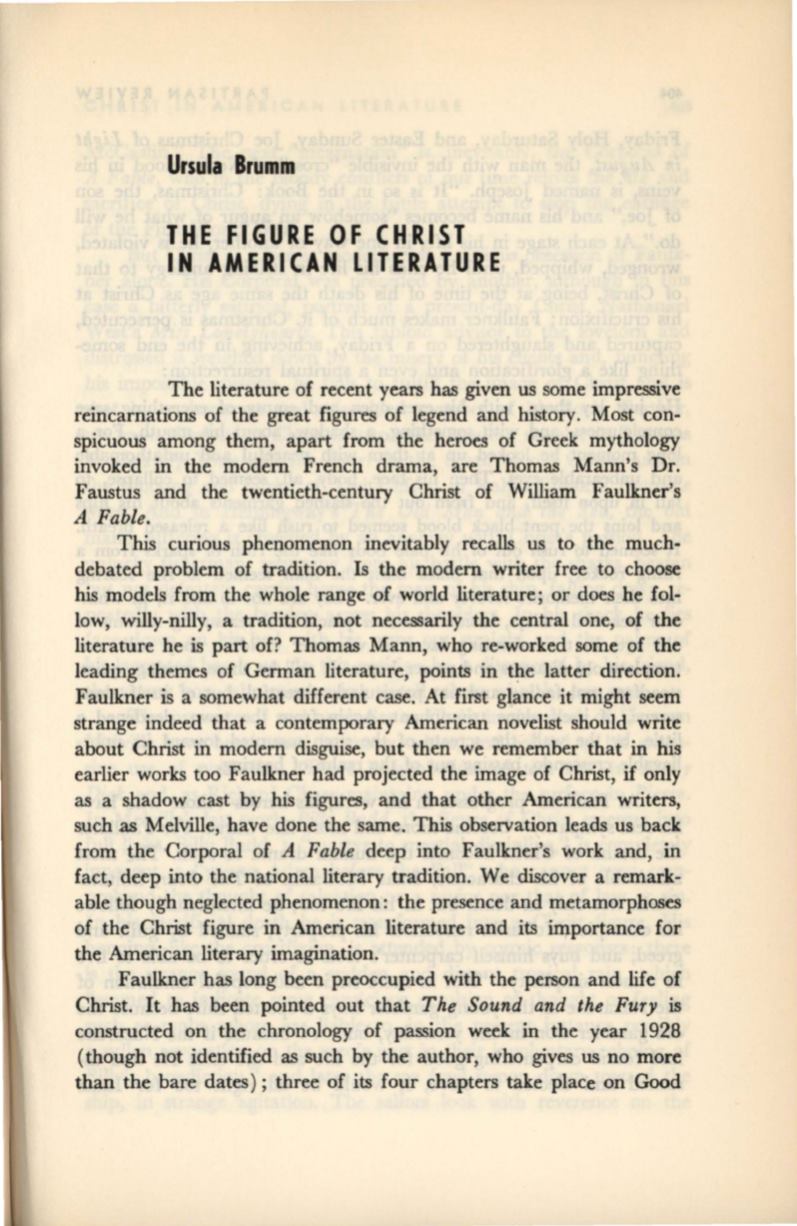
Ursula Brumm
THE FIGURE OF CHRIST
IN AMERICAN LITERATURE
The literature of recent years has given us some impressive
reincarnations of the great figures of legend and history. Most con–
spicuous among them, apart from the heroes of Greek mythology
invoked in the modem French drama, are Thomas Mann's Dr.
Faustus and the twentieth-century Christ of William Faulkner's
A Fable.
This curious phenomenon inevitably recalls us to the much–
debated problem of tradition. Is the modem writer free to choose
his models from the whole range of world literature; or does he fol–
low, willy-nilly, a tradition, not necessarily the central one, of the
literature he is part of? Thomas Mann, who re-worked some of the
leading themes of German literature, points in the latter direction.
Faulkner is a somewhat different case. At first glance it might seem
strange indeed that a contemporary American novelist should write
about Christ in modem disguise, but then we remember that in his
earlier works too Faulkner had projected the image of Christ, if only
as a shadow cast by his figures, and that other American writers,
such as Melville, have done the same. This observation leads us back
from the Corporal of
A Fable
deep into Faulkner's work and, in
fact, deep into the national literary tradition. We discover a remark–
able though neglected phenomenon: the presence and metamorphoses
of the Christ figure in American literature and its importance for
the American literary imagination.
Faulkner has long been preoccupied with the person and life of
Christ. It has been pointed out that
The Sound and the Fury
is
constructed on the chronology of passion week in the year 1928
(though not identified as such by the author, who gives us no more
than the bare dates) ; three of its four chapters take place on
Good


